Wild Ramps (Allium tricoccum), or also commonly called Wild Leeks, are a tasty non-timber forest product that’s gotten quite a lot of attention lately.
It’s delicious oniony and garlicky flavor has become a favorite in a lot of dishes, and rightfully so.
If you have tasted them before, it’s likely you’ve not forgotten. They truly are delicious!
The problem is that they grow in the wild, and people have a tendency to over-harvest them.
Many well know ramps patches are now extinct, because of unsustainable harvesting.
In places like Quebec and Ontario, they have become a protected species.
But what if we could farm them at home? Many rural landowners have a forest with not much use.
Why not forest farm wild ramps in your forest? It would be a great way to make a little bit of profit if you wanted or just to allow yourself to harvest fresh leeks for your cooking.
But foremost, being a forest farmer of ramps means you will become a champion in the conservation and sustainability of this species.
And if you do sell, then you will bring the delicious ramps to market from your own farm, which means you will help reduce the stress on local patches.
What are Wild Ramps?
Wild ramps (Allium tricoccum) have so many names, wild leeks, wild onions, wild garlic, ramsons, or spring onion.
They are a wild edible that sprouts very early in spring, they are one of the first wild edibles to come up.
In terms of nutrition, wild ramps are high in vitamin A. They also have a good amount of vitamin C, chromium and selenium.
Ramps are also an easy to add to your diet source of antioxidants.
The whole part of the plant is eaten, from the delicious bulbs (pickle them!) to the stems that taste like onions and the leaves that taste like scallions.

They are simply delicious. There are plenty of wild ramps recipes that will make your mouth water Homer Simpson style.
Where Wild Ramps Grow
Before you learn how to farm ramps, you need to know what region they come from, when, and where you can find them in the wild.
Ramps grow in eastern North America, commonly found in the Appalachian mountains, hardiness zone 4-7.
They often grow on north-east facing hillsides in loamy, loose soil with usually a ph usually from 6.8 to 7.2.
Ramps like to grow in leafy deciduous forests.
They love forests with beech, birches, cherry, poplar and maple trees that have rich, moist soils.
Since soils in coniferous forests are generally higher in PH and have too much shade, ramps cannot easily grow there.
When Ramps Grow: March – April ~ mid-May
Ramp leaves come up while they have the best sunlight, in early Spring when forest’s tree canopy is just starting to burgeon.
Their mission is to quickly grow leaves, photosynthesize and gather all the nutrients into their bulbs. These nutrients will feed them throughout their dormant stage.
In mid to late May, when the tree canopy is filling and blocking more sunlight, their leaves will start to wilt and the plant will become barely visible.
The now shady forest floor will keep moisture in the soil. This creates the right condition for ramps to sprout up their flower scape.
Their scape won’t flower until early July. It’s a good idea to keep a close eye on them if you plan to propagate your ramps later with seeds.
Fun Fact: Ramp leaves only appear early spring because they are an ephemeral plant.
Ephemeral plants will come up early spring before many other plants, grow leaves for about two months, drop their leaves, then flower and go dormant.
When Ramps Reproduce: July – August – September
Ramps Reproduction by Seed
When the brownish-red plant scape flowers in around early July, it produces vanilla-white colored flowers.
In late August, the flower will start to fruit and not long after, starting in late September, the flowers will produce black seeds.
These black seeds spread and drop into the soil by gravity.
Autumn leaves that fall into the forest floor will cover the seeds and push them into the earth.
This acts as a mulch and helps the seed germinate next spring.
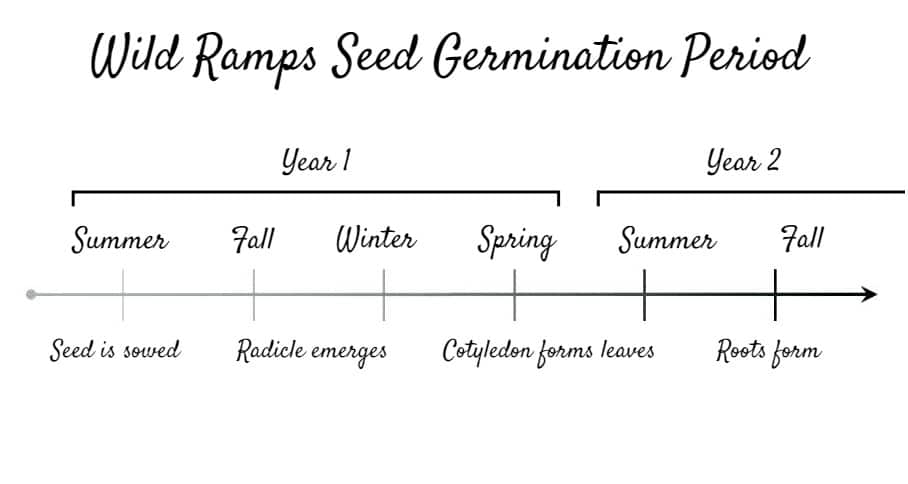
With Ramps, the seeds need a warm plus cold stratification period.
In nature, they get the first warmth when the seed drops by the end of Summer, then the cold during fall and winter.
During fall and winter, radicles emerge from the seed and when spring comes, the cotyledon forms the first leaves.
Finally, the ramp roots will first emerge during the fall of the second year after sowing.
The seeds are tricky though, if they do not get the proper warming period before fall and winter, the leaves won’t emerge until the second spring.
In the second spring, if the leaves still haven’t emerged, there is a high chance the seed will never germinate.
Pro tip: It’s important that you plant your seeds correctly because of the painfully long gap of time for them to germinate.
Ramp Reproduction by Rhizome
Ramps can also reproduce from the rhizomes of the mature plant.
The rhizome is the part of the plant that’s under the bulb where the roots are.
Ramp rhizomes are actually quite small, when they reproduce this way, the new growth will be right beside the original plant.
This way of reproduction is much faster than by seed but requires mature plants.
And sadly, for a ramp plant to reach full maturity, it can take from 5 to 7 years.
Although once you have some, you can carefully dig around the roots, pull them out, split them by hand and transplant ramps throughout your patch.
As long as the ramp has enough root matter, it will continue growing.
The takeaway here is that old and mature ramps are most important for reproduction, they should be left alone until the rhizomes create more bulbs.
Trivia: Did you know a ramp plant can live up to 20 years?
How to Forest Farm Wild Ramps
Forest farming ramps doesn’t require many things since the forest will be doing most of the work. There are 2 techniques you can go with:
1. Plant them on the Forest Floor
You can plant the ramps directly into the forest floor if your forest has the proper conditions, but it will compete with other vegetation and it might be harder to control the soil quality.
2. Plant them in Raised Beds
Or you can plant them in raised beds that you build throughout your forest. This will require more effort but increase the likelihood of success since you control the competition with weeds, the soil humidity, and quality.
What you need
You might not need some of this material if you decide to skip out on building raised beds
- Landscape ties or any logs can you use to make an 8′ by 4′ box
- Hammer & nails
- Heavy-duty stapler (to staple the weed cloth to the logs)
- Topsoil (Bags depend on how many boxes you want to build)
- Weed cloth (To stop weeds from getting into your boxes)
- Ramp bulbs
- Ramp seeds
- Gardening trowel and fork
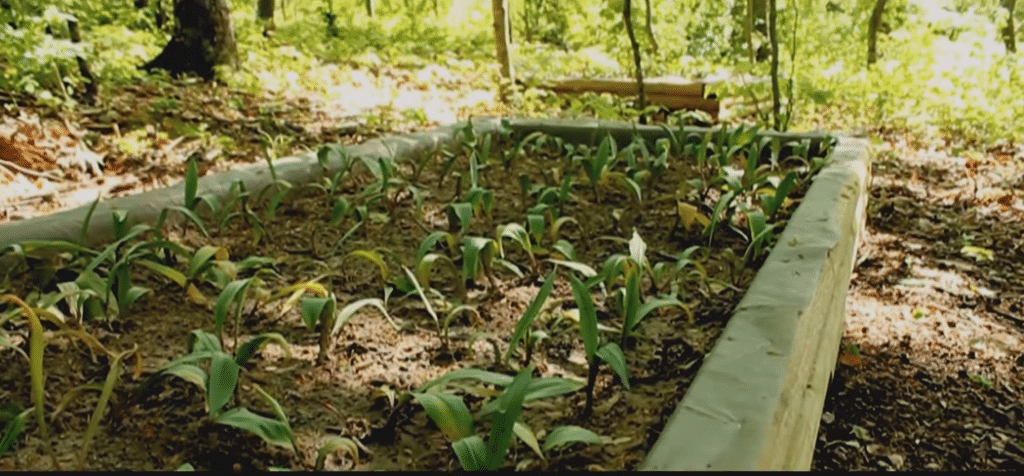
Planting in Raised Beds
Step 1: Find a spot
The best area to build these is on north-east facing forest slopes. Good drainage is important and the trick is moisture, which your topsoil will help maintain.
Step 2: Assemble your ramp bed
A good dimension to go with is 8 feet by 4 feet. You can either make it one or two logs high, up to you.
After you cut and nailed together your bed, lay down a sheet of weed cloth and staple it to the edges.
Empty your topsoil bags and voila! Done!
Step 3: Plant your ramp seeds/bulbs
When planting ramps in seeds or bulbs, there are certain rules you should follow to ensure good growth.
You should plant them in rows about 4-6 inches apart and in each row about 3 inches apart.
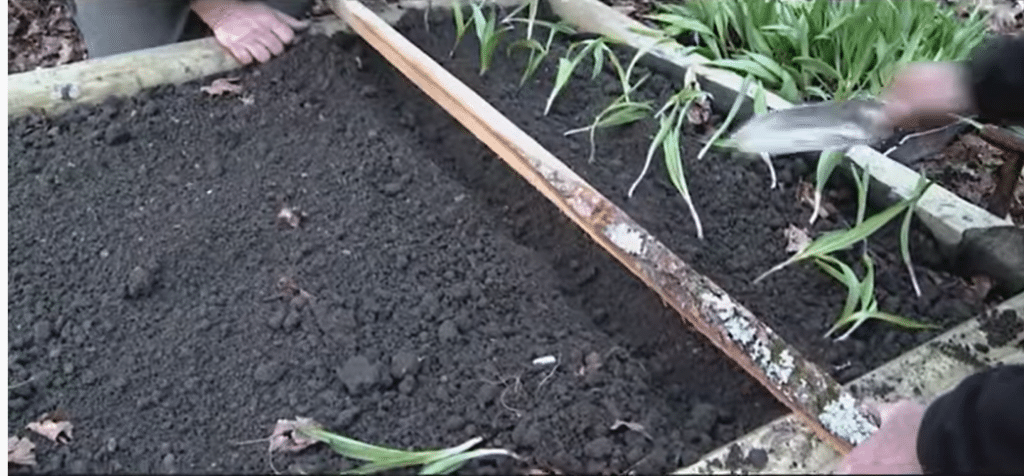
Dig a little furrow and put the bulbs in and then cover them with soil. You want the bulb to be just below the soil surface, not any deeper.
Same with the seed, you don’t want it to be too far down but you do want it to stay moist. A good idea to keep moisture is to cover the bed with mulch after you planted the seeds.
Be patient with ramps seeds as the emergence of their roots will only happen during the fall of the second year of sowing.
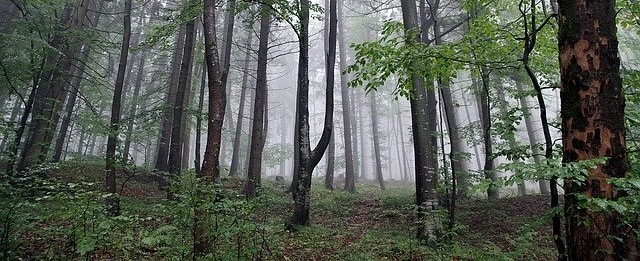
Planting on the Forest Floor
If you plant them directly on the forest floor, you’ll need to really pick the right spot.
Mature mixed hardwood forest stand, slope lands that drain are great.
North-East facing slopes are moister and cooler, which is what you want.
Look for companion plants like bloodroot (sanguinaria Canadensis) or other associated plants like blue or black cohosh, dutchman pipe, sweet Sicily, maidenhair fern.
If you find these plants in your forest, you know that the conditions are right for growing ramps.
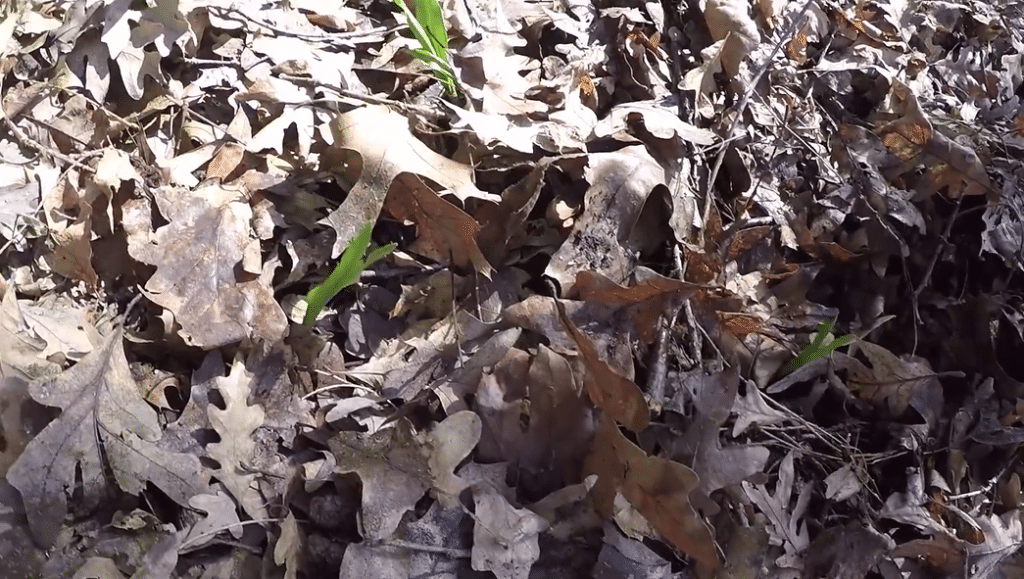
You want to plant them within the leaves like this, leaves are a perfect mulch and keep the soil moist.
You also need to have enough trees overhead to provide shade and leaf mulch during fall.
Ramps Patch Management
If you already have ramps in your forest, this is how you can manage them:
Clumps of ramps represent old growth, you can harvest a clump with say 12 plants growing together, take a third of them and transplant them around in empty patches of your forest floor.
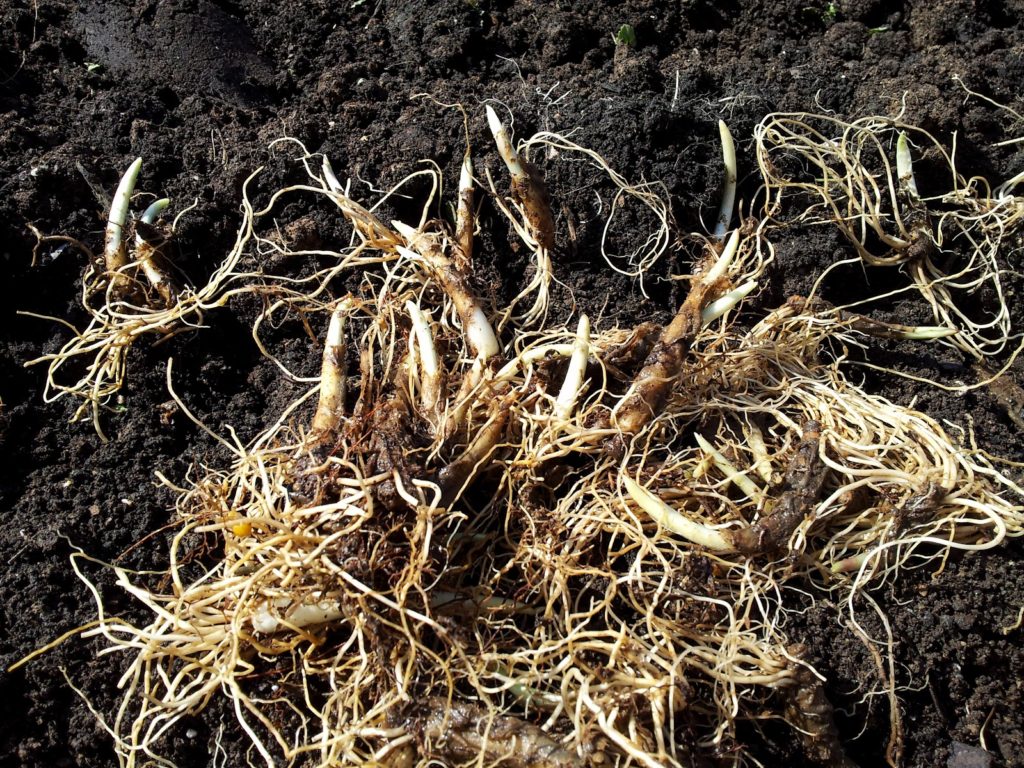
Those old growth clumps will also create bulbs like this that you can transplant or sell.
If you do harvest mature plants for sale or for cooking at home, take no more than 10% per patch and rotate from one patch to another every year.
The only time you should harvest the plants is right when the tree canopy filled up, there is a short gap of time before the leaves will turn yellow.
Harvesting them at this time will ensure that you harvest the largest amount of biomass (big leaves and bulbs).
Look for flower stalks in September and harvest the seeds. You can plant them yourself to give them a better chance or sell them online.
Don’t take them all though, you have to ensure that the plants can regenerate and continue to spread the seeds.
Raised Beds
If you didn’t have the perfect planting sites and planted them in raised forest beds, there’s not much maintenance you have to do either.
There’s no need to spray them with pesticides, there are no insects or fungus that go after wild ramps.
You should remove weeds managed to get in your patches though.
A great way to reduce weeds and to retain soil moisture is to just mulch your beds during Fall, use forest floor leaves around you.
Where Can I Buy Ramp Seeds and Bulbs?

You can buy your ramp seeds and bulbs at Wild West Virginia Ramps. They restock every season but they can sell out quickly so don’t hesitate!

Experimental Farm network also sells ramps seeds alongside plenty of other products and seeds.

Sunshine Farm and Gardens sell the bulbs. They also sell all sorts of rare and exceptional plants.
The best time to get bulbs from such companies is either during February or March.
If you won’t plant them right away, a good idea is to put them in a pot with damp organic soil.
Alternatively, you can refrigerate them for up to two weeks but the leaves might turn yellow from lack of sun.
Techniques to Plant and Propagate your Ramps
Seeds are cheaper than bulbs but take much longer to grow. Bulbs will be more expensive but if you can get them in your area it will be much faster.
Be careful when you transplant bulbs from your own patches, dig carefully around the clumps without disturbing them. A good tool to use is a gardening fork.
Planting time for seeds should be right before it gets cold. Before the leaves start to fall into the forest floor.
Seeds do need a stratification that you would normally get in nature. But you can simulate that by putting them in a refrigerator.
The best time to plant them is in late summer. But it’s also possible to plant them early spring if stratification was done.
If you are planting bulbs, early March or April is the time to plant.
If you have enough time and have a woodlot, with seeds being cheap price, this a great way to start them.
Another good thing about wild ramps is that not many wild animals eat them, which means despite the long growing time, you don’t have to worry about animals chewing on them.
Conclusion
Since wild ramps take so long to grow, I don’t see this as such a great business idea but more of a conservation effort.
You can still earn profit and help others conserve this plant by selling bulbs and seeds from your project.
And you can enjoy the delicious plant as a reward from your efforts by harvesting off your patches sustainably.
I hope you to see you join our ranks alongside others who have decided to steward wild ramps!
Hopefully, in the future, this plant will be as common as it’s once been.
A lot of this information was obtained by Jim Chamberlain and presented in his agroforestry notes. He is an expert on wild ramps and we give him full credit for a lot of the techniques and specifics about wild ramps written on this guide.

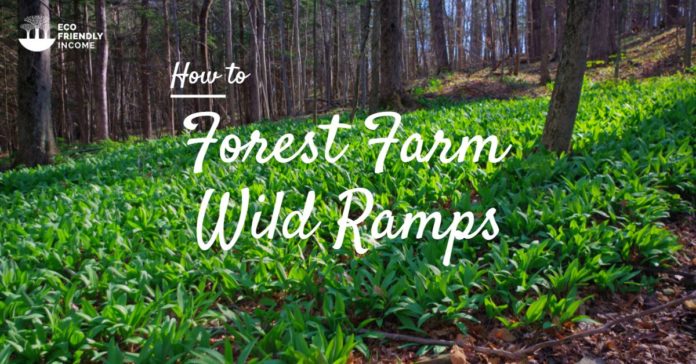
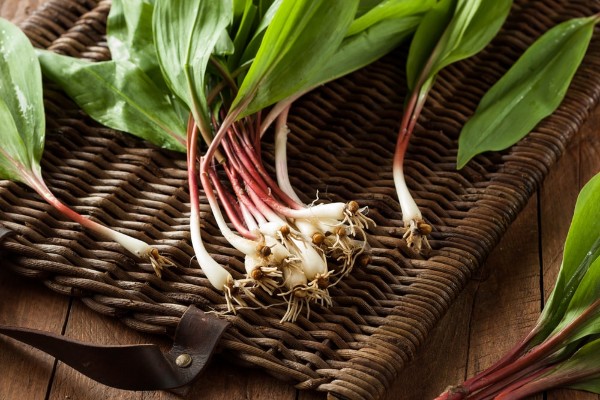
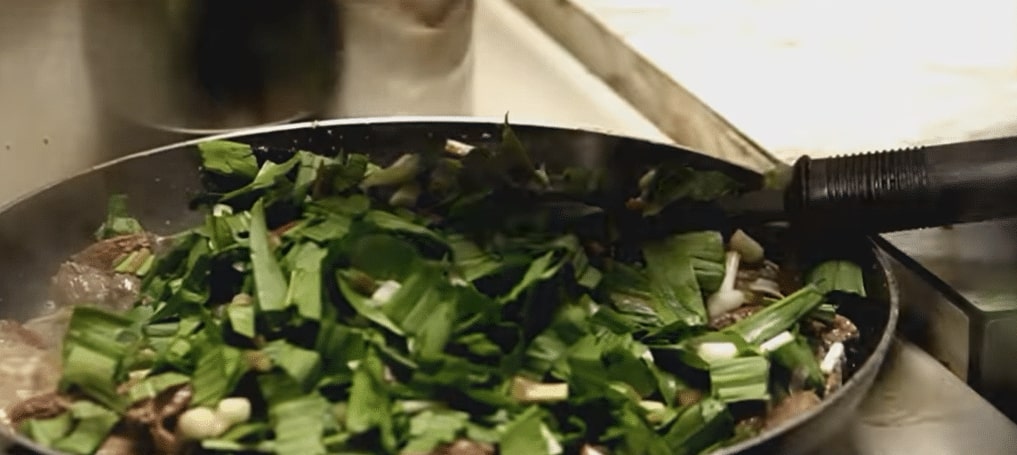
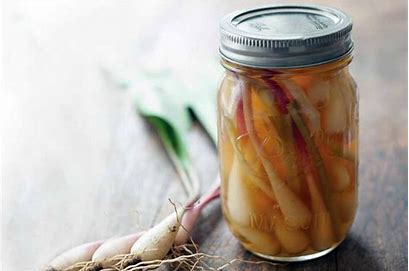
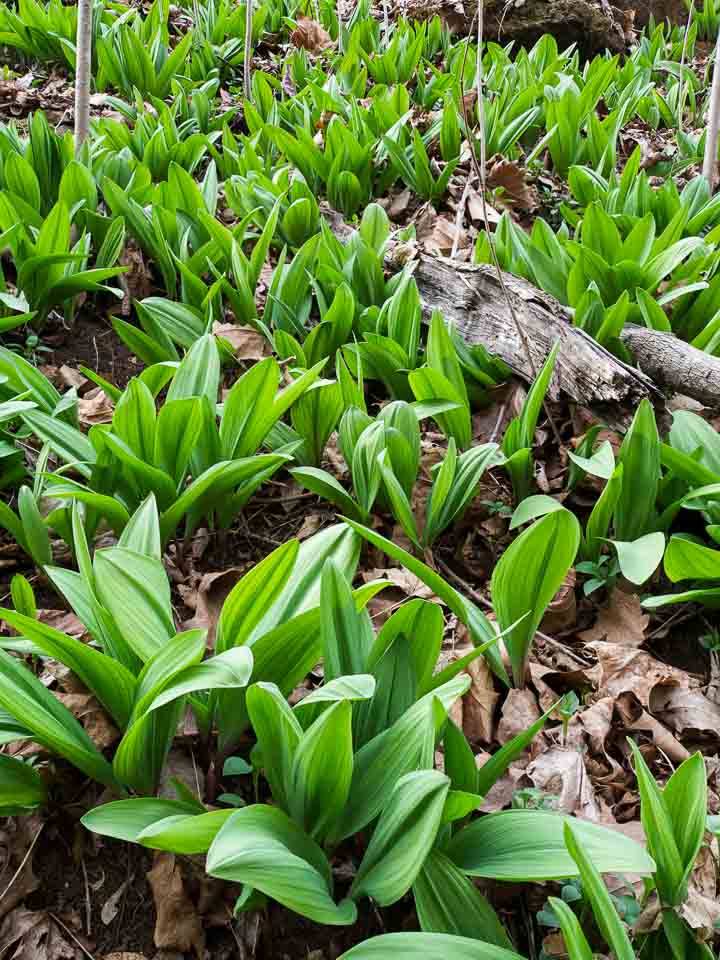

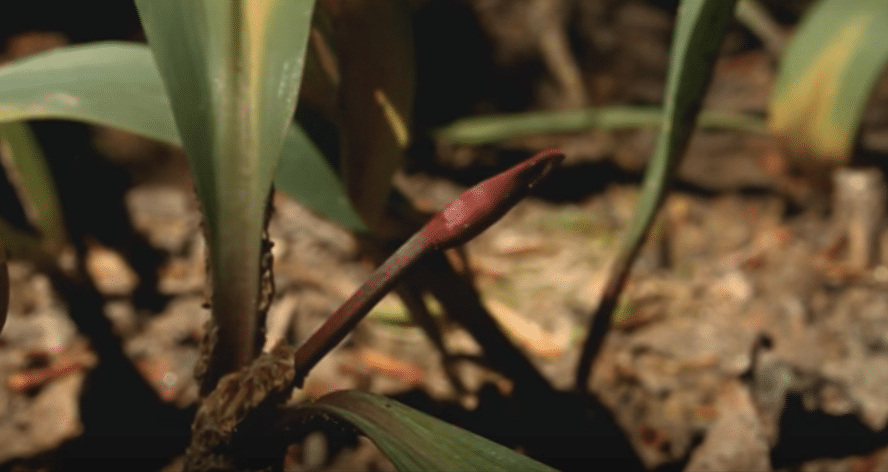
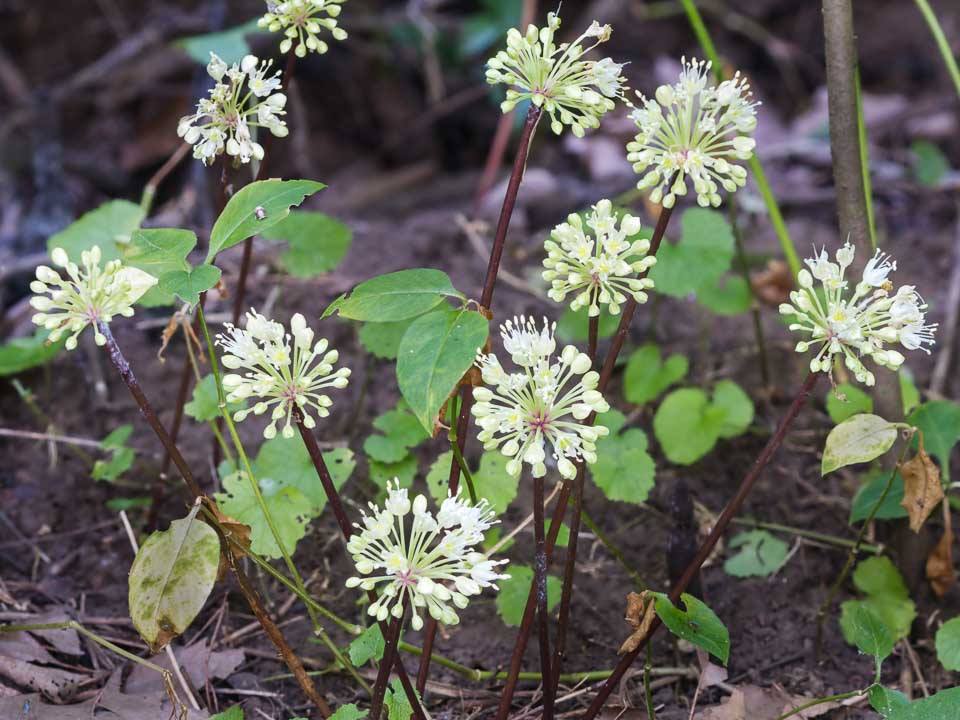
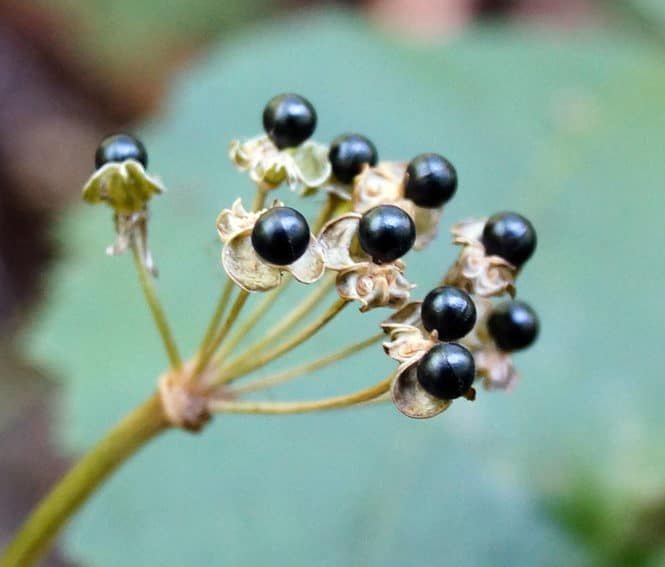
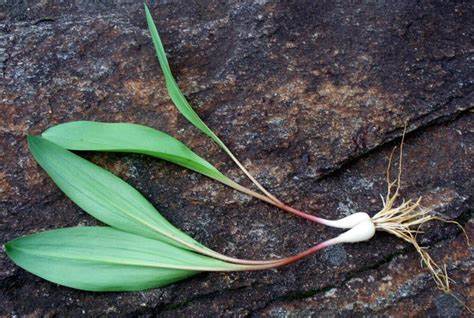

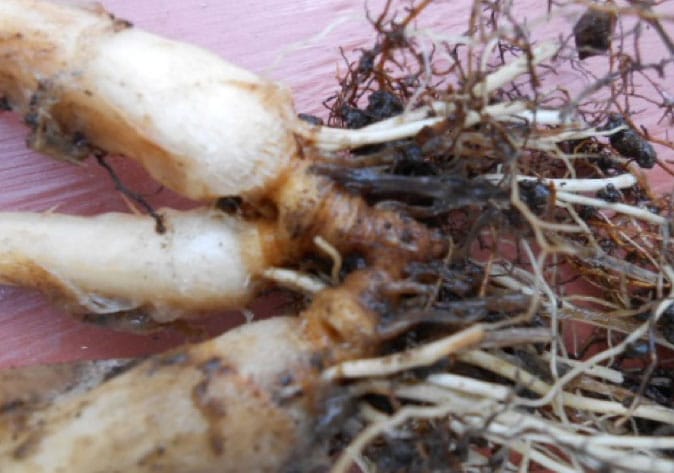
Great content! Super high-quality! Keep it up! 🙂
Great article one thing i disagree with you on is the business aspect done correctly it will be quite profitable. I have one question for you. In your opinion If i plant directly on the forest floor that has a complete canopy will there be enough natural leaf litter to insulate the seeds ?
Hi Dave, leaf little is important to keep the moisture and insulate the seed through winter. This is why I recommend that you plant the ramps seeds late summer a bit before leaves start to fall. You will see the new growth sprout tiny leaves in the next spring when the canopy is still empty. Hope this answers your question!